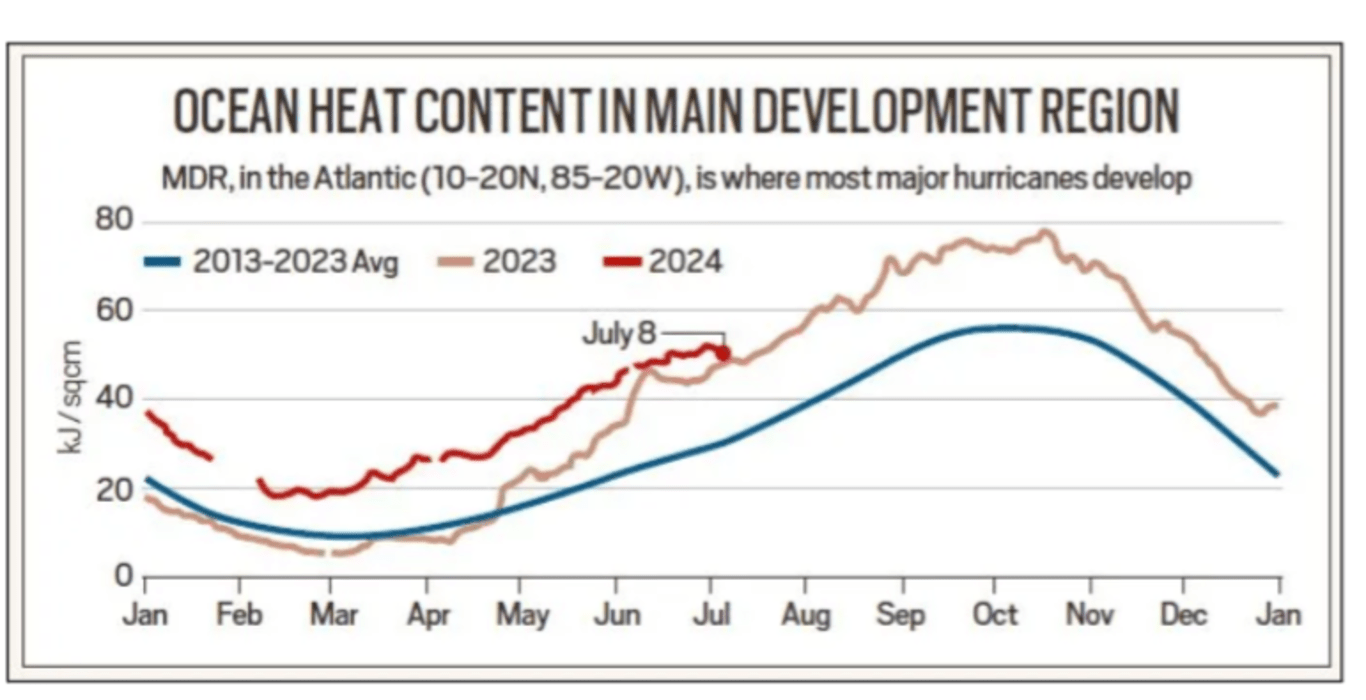News Excerpt:
Hurricane Beryl has set a record as the earliest storm in the Atlantic hurricane season to reach the highest Category 5 classification.
How are hurricanes formed?
- Hurricanes, or tropical storms, form over warm ocean waters near the equator.
- When the warm, moist air from the ocean surface rises upward, a lower air pressure area is formed below. Air from surrounding areas with higher air pressure rushes into this low-pressure area, eventually rising after it also becomes warm and moist.
- As warm, moist air rises, it cools down, and the water in the air forms clouds and thunderstorms.
- This whole system of clouds and winds gains strength and momentum using the ocean’s heat, and the water that evaporates from its surface.
- Storm systems with wind speeds of 119 kmph and above are classified as hurricanes.
Classification of Hurricanes:
- Hurricanes are classified using the Saffir-Simpson Hurricane Wind Scale into five categories (Category 1 to Category 5) based on their sustained wind speeds.
- While Category 1 hurricanes bring winds of 119 to 153 kmph, Category 5 hurricanes, which are the strongest, have winds of 252 kmph or higher.
- Storms that reach Category 3 and higher are considered major hurricanes due to their potential to inflict significant damage.
Why did Beryl become a Category 5 hurricane so early?
- The hurricane season in the Atlantic begins in June and lasts until November.
- Generally, the first major hurricanes do not form until September. This is because until then, the ocean is not warm enough, either at the surface or deeper down, to fuel such strong hurricanes.
- Although it is difficult to attribute a specific hurricane to global warming, scientists see unusually warmer oceans as the primary reason behind Beryl turning into a powerful storm early in the season.
- Since last year, ocean temperatures in the Atlantic — and across the world — have mostly been in record-breaking territory.
- Not only are sea surface temperatures rising, but ocean heat content (OHC)—a measure of the amount of heat present in ocean water—is also soaring, which is a bigger concern.
- The graph below shows that this year’s OHC (in red), for the area of the Atlantic Ocean where most major hurricanes like Beryl form, has been far above the 2013-2023 average (in blue).

Impact of climate change on hurricanes:
- Scientists agree that, at the very least, climate change makes hurricanes more prone to rapid intensification — where maximum wind speeds increase very quickly.
- The frequency and magnitude of these rapid intensification events in the Atlantic seem to have spiked between 1971 and 2020.
- Therefore, as the world and its oceans continue to become warmer, scientists are concerned that even more powerful hurricanes could form in the near future.


